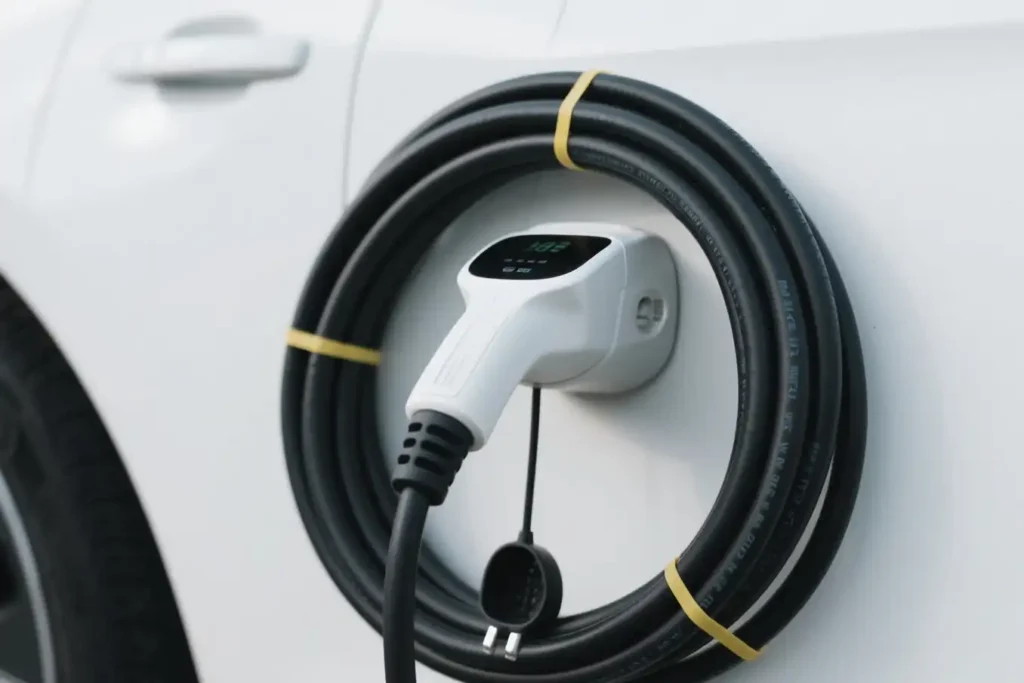You must pick the right cable size for your electric vehicle charger. The cable size depends on the charger’s amperage and how it is set up. For example, a 30A charger needs at least 6 mm² or 10 AWG wire. If the cable is long, you may need a thicker wire. This helps stop voltage drop and overheating. The table below shows common charger levels and where you might use them:
| Charger Level | Typical Installation Scenario | Voltage Range | Power Range (kW) |
|---|---|---|---|
| Level 1 | Home, work | 120 V AC | ~2 kW |
| Level 2 | Home, public | 208–240 V AC | 7–20 kW |
| Level 3 | Fast charging stations | 480–900 V DC | ~100 kW |
Always use a cable size that matches the charger’s power. Think about how long the cable is and follow safety rules. Check the summary, but read more to find what works for you.
Key Takeaways
- Pick the cable size by looking at your charger’s power, how long the cable is, and where you put it. This helps keep charging safe and working well.
- Use thicker cables if your charger has more power or if the cable is very long. This stops the cable from getting too hot and losing power.
- Always follow local rules and what the maker says. This keeps things safe and helps stop fires.
- Get a licensed electrician to pick the right cable size, put it in safely, and follow the rules.
- Check your charging setup often. Use the cable sizes that are recommended to keep your home and charger safe.
Cable Size Factors
Charging Power
When picking a cable, look at charging power first. The cable size depends on how much current the charger uses. More power means more current flows through the cable. This can make the cable get hot. You need a cable that can handle this heat safely.
- If the charger uses more power, you need a thicker cable.
- A thin cable can get too hot and be unsafe.
- Rules like IEC 60287 help you pick the right cable size.
- Some cables have special insulation, like XLPE, to handle more heat.
Always check the most power your charger can use. Pick a cable that meets or goes above that amount.
Cable Length
Cable length also matters when choosing the size. Longer cables have more resistance. This makes voltage drop happen. Less power gets to your charger, so charging slows down or breakers might trip.
- Long cables need to be thicker to stop voltage drop.
- The distance from the panel to the charger is important. Longer runs need bigger cables.
- Copper cables work better than aluminum ones. You can use a smaller copper cable.
- Using the wrong size can cause overheating, slow charging, or higher bills.
Here is a chart that shows how cable size changes the longest cable you can use for a 32A charger with a 3% voltage drop:
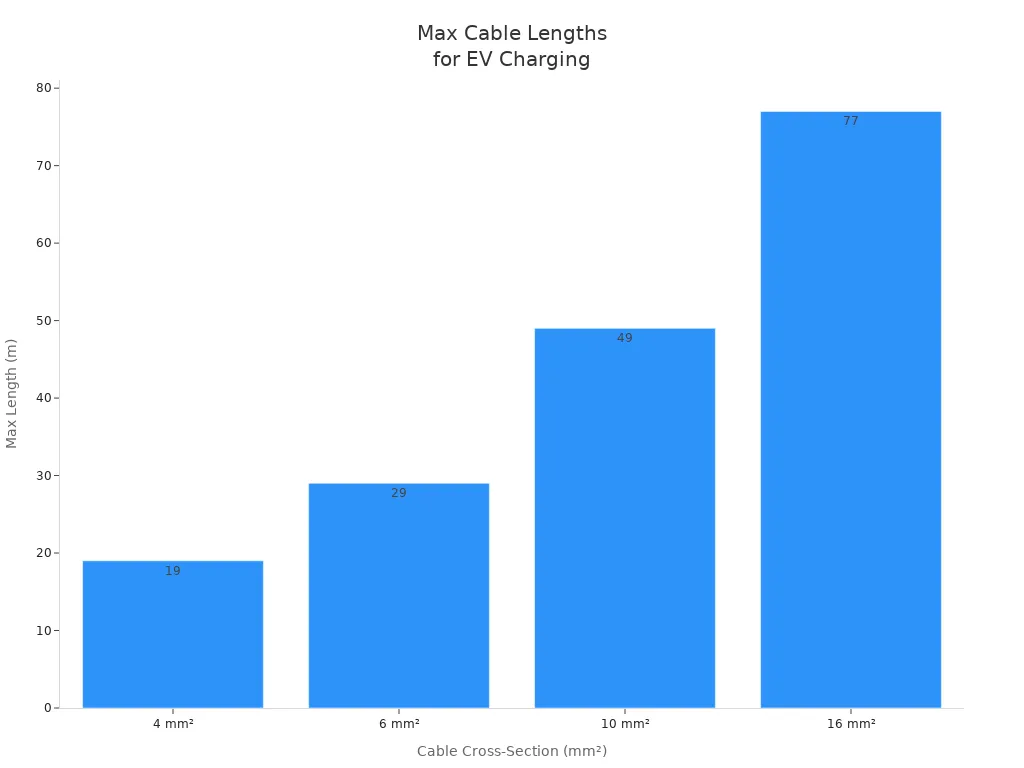
Installation Environment
Where you put the cable changes what size you need. Temperature is a big factor. If it gets hot, the cable cannot carry as much current. You will need a thicker cable.
- High heat lowers how much current the cable can carry.
- If it gets up to 180°C, use a cable one size bigger. At 250°C, go two sizes up.
- Cables outside need to be weatherproof and safe from water, heat, and chemicals.
- Cables inside, like in a garage, are safer from weather. Focus on the charger’s power instead.
- Use tubes or pipes to protect cables from rubbing, fire, or chemicals.
Tip: Always check local rules and use extra protection for outdoor cables. This keeps your setup safe and helps it last longer.
Electric Vehicle Charger Cable Sizes
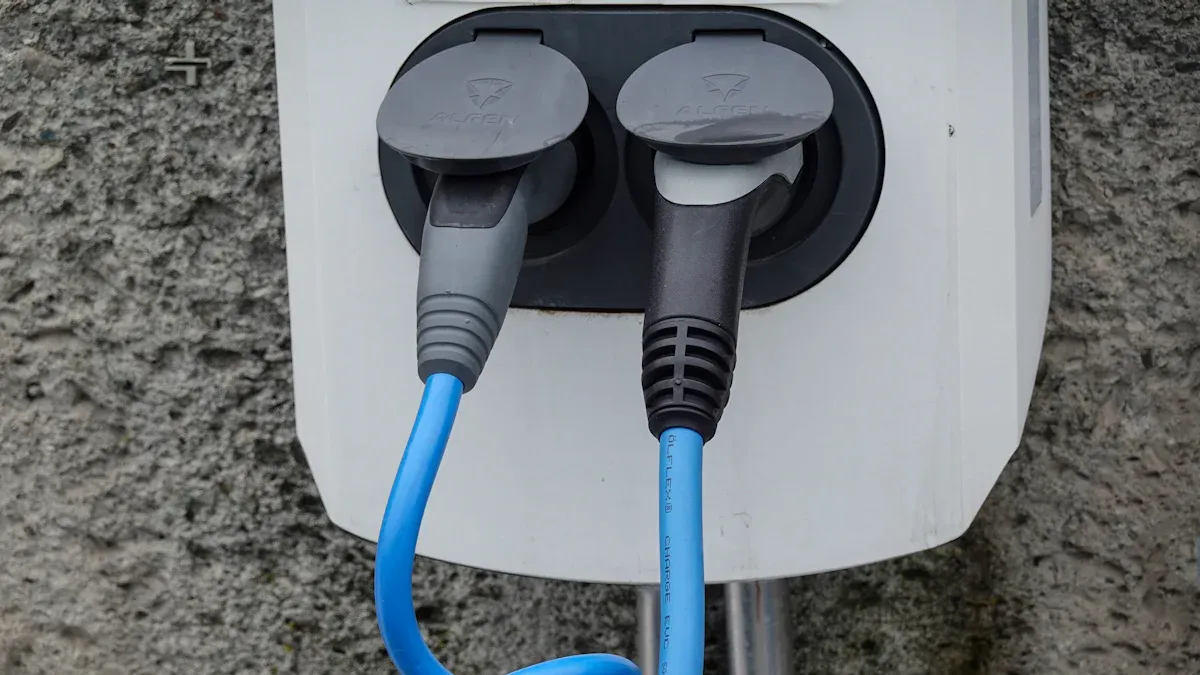
Choosing the right cable size for your electric vehicle charger depends on the charger type and how much current it uses. You also need to think about the length of the cable and where you install it. The table below shows the recommended cable sizes for the most common charger types and amperages. Both European (mm²) and North American (AWG) sizes are included.
| Charger Type | Typical Amperage | Recommended Cable Size (mm²) | Recommended Cable Size (AWG) |
|---|---|---|---|
| Level 1 (120V) | 12–16A | 2.5–4 mm² | 14–12 AWG |
| Level 2 (240V) | 16A | 2.5 mm² | 12 AWG |
| Level 2 (240V) | 24A | 4 mm² | 10 AWG |
| Level 2 (240V) | 32A | 6 mm² | 8 AWG |
| Level 2 (240V) | 40A | 10 mm² | 8–6 AWG (depends on length) |
| High-Power (240V) | 48A | 16 mm² | 4 AWG |
Note: Always check local codes and manufacturer instructions. Cable size may need to increase for longer runs or higher temperatures.
Level 1 Chargers
Level 1 chargers use a standard 120V outlet. You often find these chargers at home. They usually draw between 12 and 16 amps. Because the current is low, you can use smaller cables. Most homes already have wiring that supports Level 1 charging.
- Level 1 electric vehicle chargers work with 12–16A at 120V.
- Charging is slow, often taking up to 50 hours for a full charge.
- You can use 2.5 mm² or 14–12 AWG wire for these chargers.
- The cable and breaker must safely handle at least 16A.
You can plug a Level 1 charger into a regular outlet. This makes it easy to use, but charging takes a long time. Always make sure the outlet and wiring are in good condition.
Level 2 Chargers
Level 2 chargers use 208–240V power. These chargers are common in homes, workplaces, and public places. They charge much faster than Level 1 chargers. The current can range from 16A to 48A, so you need to pick the right cable size.
| Charger Amperage | Breaker Size | Wire Gauge (AWG) | Wire Size (mm²) |
|---|---|---|---|
| 16A | 20A | 12 AWG | 2.5 mm² |
| 24A | 30A | 10 AWG | 4 mm² |
| 32A | 40A | 8 AWG | 6 mm² |
| 40A | 50A | 8–6 AWG | 10 mm² |
| 48A | 60A | 6 AWG | 16 mm² |
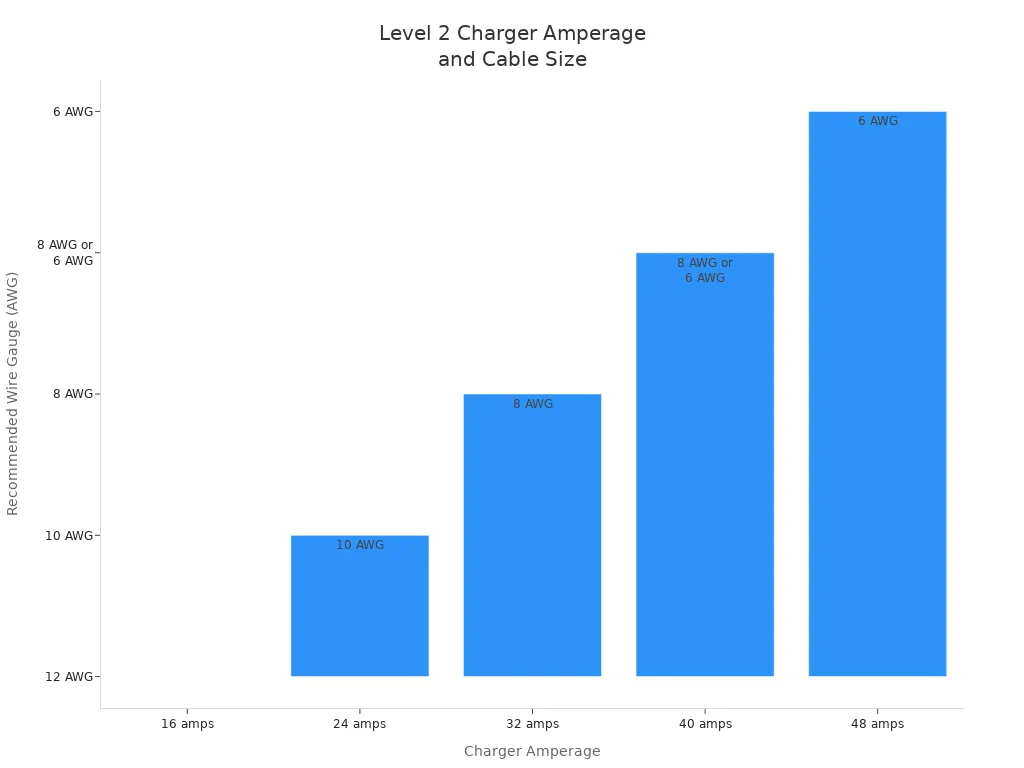
- Most home electric vehicle chargers use 16A, 32A, or 40A.
- For 32A, you need at least 6 mm² or 8 AWG wire.
- For 40A, use 8 AWG or 6 AWG, depending on the cable length.
- The breaker should be at least 125% of the charger’s current.
If your cable run is long, you may need a thicker cable to prevent voltage drop. Always check the distance from your panel to the charger. If you install the cable outdoors or in a hot area, you may need to increase the cable size.
High-Power Chargers
High-power electric vehicle chargers deliver 40A or more. These chargers are common in commercial settings or for fast home charging. They need much thicker cables to handle the high current safely.
- For 48A charging, use 4 AWG (about 16 mm²) copper wire.
- #6 AWG copper wire is not enough for 48A continuous loads.
- Use #4 AWG copper NM or THWN wire with a 60A breaker for best safety.
- Some commercial chargers use even larger cables, up to 95 mm² in Europe.
| Region/Standard | Cable Size Units | Typical Cable Sizes for High-Power EV Chargers | Ampacity Range (Approx.) |
|---|---|---|---|
| Europe | mm² | 16mm², 25mm², 35mm², 50mm², 70mm², 95mm² | 30A–400A |
| North America | AWG | 6 AWG, 4 AWG, 2 AWG, 1/0 AWG | Varies by insulation |
The AWG system works differently from the mm² system. In AWG, a smaller number means a thicker wire. In Europe, the cable size is the cross-sectional area in mm². Always check which system your country uses.
Tip: For high-power chargers, always use cables rated for continuous loads. If you are not sure, ask a licensed electrician. Using the wrong cable can cause overheating and safety risks.
When you choose a cable for your electric vehicle charger, always consider the charger’s power, the cable length, and the installation environment. If the cable run is long or the area is hot, use a thicker cable. This keeps your charging safe and efficient.
Cable Size Calculation
Step-by-Step Guide
You can follow a clear process to choose the right cable size for your electric vehicle charger. This helps you stay safe and meet code requirements.
- Find the Charger’s Amperage
Look at your charger’s manual or label. Multiply the maximum charge rate by 1.25 to get the minimum circuit size. For example, a 32A charger needs a circuit rated for at least 40A. - Check Manufacturer Requirements
Review the installation guide. Manufacturers often list the recommended breaker size and wire gauge. For example, some suggest 8 AWG for 32-40A and 6 AWG for 48A. - Calculate the Load on Your Panel
Make sure your electrical panel can handle the new load. Subtract your home’s highest load from the main breaker rating. If you do not have enough capacity, you may need to upgrade your panel. - Measure Cable Length
Measure the distance from your panel to the charger. Longer runs need thicker cables to prevent voltage drop. - Use a Cable Size Formula or Calculator
You can use this formula for DC circuits:A = (2 × D × I × ρ) / V- A = cable cross-sectional area (mm²)
- D = one-way cable length (meters)
- I = current (amps)
- ρ = resistivity of copper (0.0178 Ω·mm²/m)
- V = allowable voltage drop (volts)
For AC circuits, online calculators like those from Southwire or Eland Cables can help.
- Install and Test
Mount the charger, run the correct cable, and connect it to the breaker. Test the system before regular use.
Tip: Always round up to the next larger cable size if you are unsure. This adds safety and allows for future upgrades.
Example Calculations
Let’s look at a typical home setup:
| Charger Power | Voltage | Calculated Current | Minimum Wire Size (Copper) |
|---|---|---|---|
| 9.6 kW | 240 V | 40 A | 8 AWG |
You have a 9.6 kW electric vehicle charger at 240 V. Divide 9,600 W by 240 V to get 40 A. Multiply by 1.25 for safety, which gives 50 A. For this, you should use at least 8 AWG copper wire. If your cable run is longer than 50 feet, move up to 6 AWG to avoid voltage drop.
For commercial chargers above 50 A, use 6 AWG or larger. Always check for extra heat or long cable runs, and increase the cable size if needed.
Note: The National Electrical Code requires you to size wires for 125% of the charger’s rated current. Always follow local codes and manufacturer instructions.
Safety and Compliance
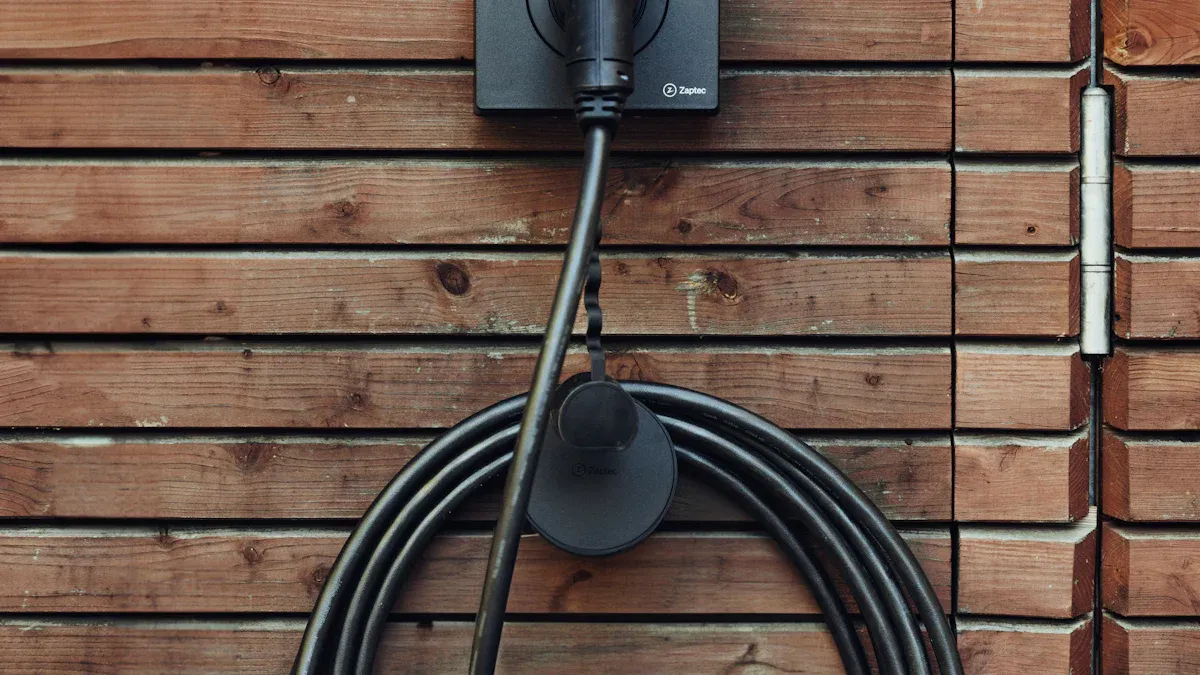
Codes and Standards
You need to follow special rules when you put in an electric vehicle charger. These rules help keep your house and family safe. In the United States, the National Electrical Code (NEC) Article 625 gives the main rules for cable size and how to install it. This code says your cables must be sized for 125% of the charger’s rated current. It also lists which cable types you can use, like EV, EVJ, and EVE. If your charger is outside, you must use waterproof boxes and protect the cables from getting hurt.
In Europe, the IEC 61851-1 standard covers safety for charging systems. Other standards, like UL 2202, focus on fire and shock safety. These codes make sure your setup can handle the power and keep you safe from electrical dangers.
If you use cables that are too small, they can get too hot and start a fire. Fires from bad wiring can be hard to see at first but can cause big damage. Always pick the right cable size and follow the rules for your area.
Tip: Always check your local rules before you start. Rules can change, and following them helps you avoid trouble and keeps your insurance good.
Professional Installation
Getting a licensed electrician is one of the best ways to make sure your electric vehicle charger is safe and works well. Electricians know how to work with high-voltage systems and follow all safety rules. They use the right tools and steps to stop mistakes, like bad wiring or using the wrong cable.
Some problems from doing it yourself include:
- Using cables that are too thin, which can get hot and start a fire.
- Making bad connections that cause sparks and heat.
- Picking outlets that cannot handle high current.
- Not grounding things right, which makes electrical problems more likely.
A licensed electrician will:
- Make sure your setup follows all rules and codes.
- Pick the right cable and breaker size for your charger.
- Give you warranty and insurance help.
- Give advice on upgrades and support later.
Note: Professional installation keeps your home and family safe. It also helps your electric vehicle charger work well for a long time.
Picking the right cable size helps keep charging safe. You should always look at your charger’s power and how long the cable is. Think about where you will put the cable. Make sure to follow local rules. Use the tables and steps in this guide to help you. A licensed electrician can check your panel and put in the right wires. They will also test the system to make sure it is safe. Checking your setup often and installing it the right way stops problems. This helps your charger work well for a long time.
FAQ
What happens if you use a cable that is too small for your EV charger?
If you use a cable that is too small, it can overheat. This may cause a fire or damage your charger. Always choose the correct cable size for safety.
What is the difference between AWG and mm² cable sizes?
AWG stands for American Wire Gauge. It is used in North America. mm² means square millimeters. It is used in Europe. Both measure cable thickness, but the numbers are not equal.
What cable size should you use for a 32A Level 2 charger?
You should use at least 6 mm² or 8 AWG copper wire for a 32A Level 2 charger. This size helps prevent overheating and voltage drop.
What should you check before installing an EV charger cable?
You should check the charger’s power rating, cable length, and installation environment. Always follow local codes and manufacturer instructions.
What is voltage drop and why does it matter for EV charger cables?
Voltage drop means the voltage gets lower as electricity travels through the cable. Too much voltage drop can slow charging and damage your charger. Use thicker cables for long runs.
See also
How to Choose the Right MCB Size for a 22kW Electric Vehicle Charger
What is the recommended MCB size for connecting solar panels
How to Choose the Right Circuit Breaker for Your Electric Vehicle Charging Setup
How to choose to install a solar inverter
What size of wire is needed for a 30 ampere circuit breaker

